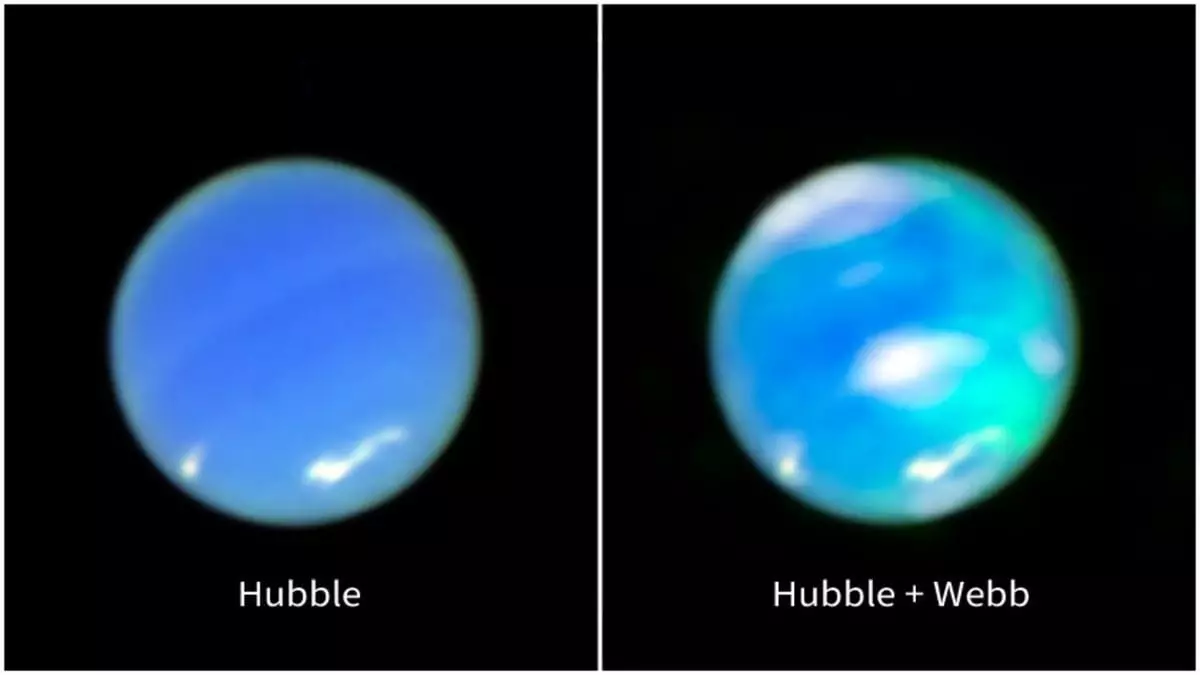In an astonishing turn of astronomical events, the James Webb Space Telescope (JWST) has captured Neptune’s elusive auroras for the first time, illuminating the icy giant’s atmospheric dynamics in vivid detail. This epoch-making revelation is not just a mere addition to our celestial knowledge; it represents a significant leap in our understanding of planetary atmospheres. For decades, speculation reigned supreme regarding the existence and nature of auroras on Neptune, but this revolutionary discovery marks an end to uncertainty.
A Breakthrough in Imaging Technology
The JWST’s advanced near-infrared imaging capabilities have been hailed as a pivotal factor in this breakthrough. While earlier missions like Voyager 2 hinted at the presence of auroras, the challenge of collecting concrete photographic evidence was insurmountable until now. The JWST stands as a testament to the efficacy of cutting-edge technology, proving that the barriers of distance and time can be surmounted to bring the cosmos closer to our understanding.
The nuances in the images captured through JWST’s observations shed light on how Neptune’s auroras deviate from their more conventional manifestations found on planets like Earth, Jupiter, and Saturn. This unexpected distribution hints at a compelling narrative about Neptune’s magnetic field—a highly tilted and offset anomaly that orchestrates a chaotic interplay between solar wind and magnetosphere. It is a striking reminder of how much we still have to learn about the forces shaping our solar system.
Scientific Implications and Venturing into the Unknown
From a scientific standpoint, the detection of the trihydrogen cation (H₃⁺) in Neptune’s ionosphere serves as a powerful marker of auroral activity. This discovery aligns with our understanding of gas giants within our solar system, as H₃⁺ has been a reliable indicator of auroral emissions elsewhere. But what does this mean for our broader comprehension of planetology? It highlights the importance of continual investment in research and technology. The failures of ground-based observations should galvanize a committed approach toward developing more sophisticated instruments that can probe the mysteries of our outer planets.
Additionally, the temperature measurements suggest Neptune’s upper atmosphere has been cooling since the Voyager 2 flyby in 1989, leading to softer emissions. This raises pertinent questions about climate dynamics not just on Earth but across the solar system. Are we on the verge of unveiling further shocking discoveries about planetary atmospheres and their conductive implications?
The Call for Future Exploration
The JWST’s monumental findings serve as a call to action for the scientific community. Atmospheric studies must evolve with the needs of a changing world. As climate concerns grow increasingly pressing, insights gained from Neptune’s atmospheric conditions could fuel further scientific inquiry that transcends our solar neighborhood. The journey toward unveiling the secrets of Neptune isn’t merely about the thrill of discovery; it’s about cultivating a deeper understanding of the complex interconnections that govern our universe.
As we celebrate this incredible milestone, we ought to embrace the notion that many doors remain ajar. Each new piece of information serves as a building block leading us to an expansive worldview—one where Neptune and its dynamic beauty are no longer shrouded in mystery.


Leave a Reply